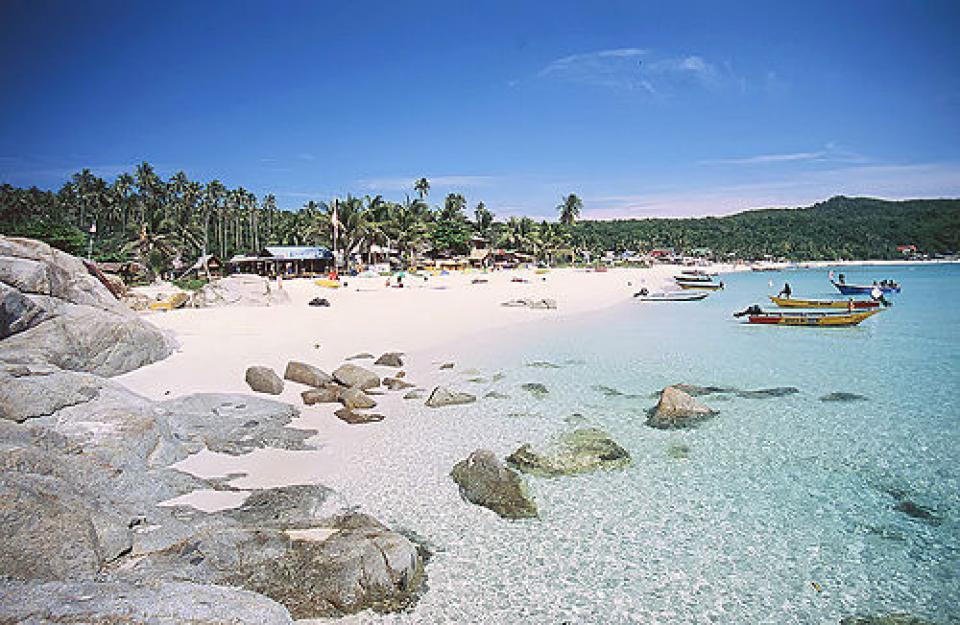The Perhentian Islands are a small group of beautiful,
coral-fringed islands off the coast of northeastern Malaysia in the state of
Terengganu, not far from the Thai border.
The Perhentian Islands (pronounced Perhen-TEE-AHN, not
Perhen-SHEN) lay approximately 10 nautical miles (19 km) offshore the coast of
northeastern Malaysia in the state of Terengganu, approximately 40 miles (64
km) south of the Thai border. The name Perhentian means "stopping
point" in Malay. This is because the islands became a staging point used
by traders traveling from
Malaysia to Bangkok.
The two main islands are Pulau Perhentian Besar ("Big
Perhentian Island") and Pulau Perhentian Kecil ("Small Perhentian
Island"). Kecil attracts more travellers as it has cheaper accommodation,
while Besar is a little more expensive and caters more to families and those
who want to avoid the backpacker party scene.
The small, uninhabited islands of Susu Dara, Seringgi and
Rawa lie off Kecil. All the islands belong to a protected marine park, which means
that fishing, collecting coral and littering are strictly prohibited, although
in practice litter is one of the major problems that face the islands.
The Perhentian Islands offer some great
diving and excellent snorkeling. In addition to coral and fish, the Perhentians
are home to sea turtles and several species of shark. The islands are also
crisscrossed by small paths connecting one beach to another, but be prepared to
sweat and swat off bugs if you tackle any of these.
There is very little luxury accommodation on
the Perhentian islands. with the top of the line being air-conditioned chalets
and the bottom being a bunk in a longhouse. Discounts are usually negotiable in
the off season but the better accommodation can get snapped up fast especially
on weekends and holidays.
BEWARE OF THE MONSOONS
Due to the eastern monsoon, the season in the Perhentians
(and all other east coast islands) is effectively limited to the period between
the beginning of June until late October. Outside this period the seas can be
very rough and choppy, skies overcast, and with currents that make swimming
dangerous and most (though not all) accommodation options are closed. However,
many of them located on Coral Beach start on beginning of Feb, while on the
Long Beach usually a month later. Do not believe the travel-agents when they
claim the accommodations are open. Even if they will provide a room,
restaurants and all shops (i.e. no place to get water, food, sunscreen etc.)
are closed in off-season. If the restaurant is open, food choices will be very
limited and over-priced. However, in the village cheap meals and shops are
available year-round.
When going during off-season be aware that there will be no
one there aside from you and maybe a handful of locals.





No comments:
Post a Comment